The UN has described the deep sea as “the largest source of species and ecosystem diversity on Earth.” Life thrives particularly on the vast expanses of sea floor known as abyssal plains, amid the submarine mountains that rise from them and around superheated springs. Extremes of temperature and pressure have proved no obstacle to the creatures here. But plans to commercially mine the seabed pose a grave threat to their survival.
Abyssal plains, the flattest places on the planet, are home to fish, eels, crustaceans, molluscs, sponges, sea cucumbers, starfish and brittle stars to name a few.
Virtually every dive to a submarine mountain, or “seamount”, reveals species endemic to that particular island of life. More than 800 species of fish have been discovered, as well as gardens of corals and sponges that attract further species of crustacean, mollusc and sea cucumber. Open-sea fauna such as tuna, sharks and sea turtles also visit, to feed on the permanent residents.
More than 500 species have been identified in hydrothermal vent ecosystems, including tubeworms, mussels, crabs, squat lobsters, limpets, scaleworms, zoarcid fish and octopuses.
Mining companies are eager to scrape metal-rich nodules off the abyssal plains using mechanical “crawlers” reminiscent of tanks. Other robots may be able to extract the metallic crusts that cover many seamounts. And the metal-rich sulphide deposits at hydrothermal vents could be crushed and excavated too.
As well as destroying species directly, mining would stir up sediment that could smother sponges and corals. To date, only 5% of the ocean floor has been explored. Scientists argue that more research is needed to understand the extraordinary range of life down here, its wider importance for the ocean, and the impact mining could have.
The “ghost octopus” lays its eggs on the stalks of sponges anchored to metallic nodules. Scientists only discovered the pigment-free species in 2016, in the Hawaiian Archipelago at 4,290 meters below sea level. It was soon nicknamed “Casper”. (NOAA)
A brittle star entwined with bamboo coral. Brittles usually crawl along the seafloor with their five whip-like arms, which can reach up to 60 centimetres in length. This one was photographed in the Central Pacific Basin, an area where metallic nodules have been discovered. (NOAA)
Iridogorgia soft coral, with its distinctive spiral shape, in the Gulf of Mexico. Corals provide a habitat for many organisms including sponges, shrimp and worms. Two squat lobsters are seemingly climbing their way up this one. (NOAA)
A squat lobster in amongst Victorgorgia soft coral near the Phoenix Islands in the Central Pacific (Schmidt Ocean Institute)
Mushroom soft coral with feeding polyps extended on the Davidson Seamount, at 1,470m below. Some deep sea corals can live for several thousand years, making them the oldest organisms on the planet. (NOAA)
A batfish strikes an intimidating pose, in the subtropical Atlantic, a region containing metallic nodules. Being awkward swimmers, batfish tend to manoeuvre directly over the seafloor on their pectoral and pelvic fins. (NOAA)
A sea anemone, bearing a striking resemblance to a Venus flytrap, on the Davidson Seamount off California. (NOAA)
This ethereal siphonopore was observed at about 3,700 metres beneath the Gulf of Mexico. (Schmidt Ocean Institute)
Blue and white microbes on a hydrothermal vent in the Pescadero Basin of the Gulf of Mexico. In the absence of sunlight these microbes rely on chemosynthesis to survive. Many organisms, including the scaleworm visible to the right, feed on them. (Schmidt Ocean Institute)
NOAA scientists are not certain why these hydrothermal shrimp in the Mariana Arc exhibit such a range of colours. Shrimp are found at 3,500m deep here, on vents spouting fluid as hot as 365C. Other fauna in these parts include mussels, limpets, anemones and bristle worms. (NOAA)
A sea cucumber “dancing” at approximately 1,500m depth off Kona, Hawaii. The cucumbers occasionally lift off, apparently to evade predators or move more quickly from A to B. (NOAA)
This article is part of our deep-sea mining series. Read more here:
The future of deep seabed mining
Can a ‘mining code’ make deep seabed extraction sustainable?
Deep seabed mining: key questions
We need to better understand the deep ocean if mining is to go ahead
Is China ready to mine the deep sea?

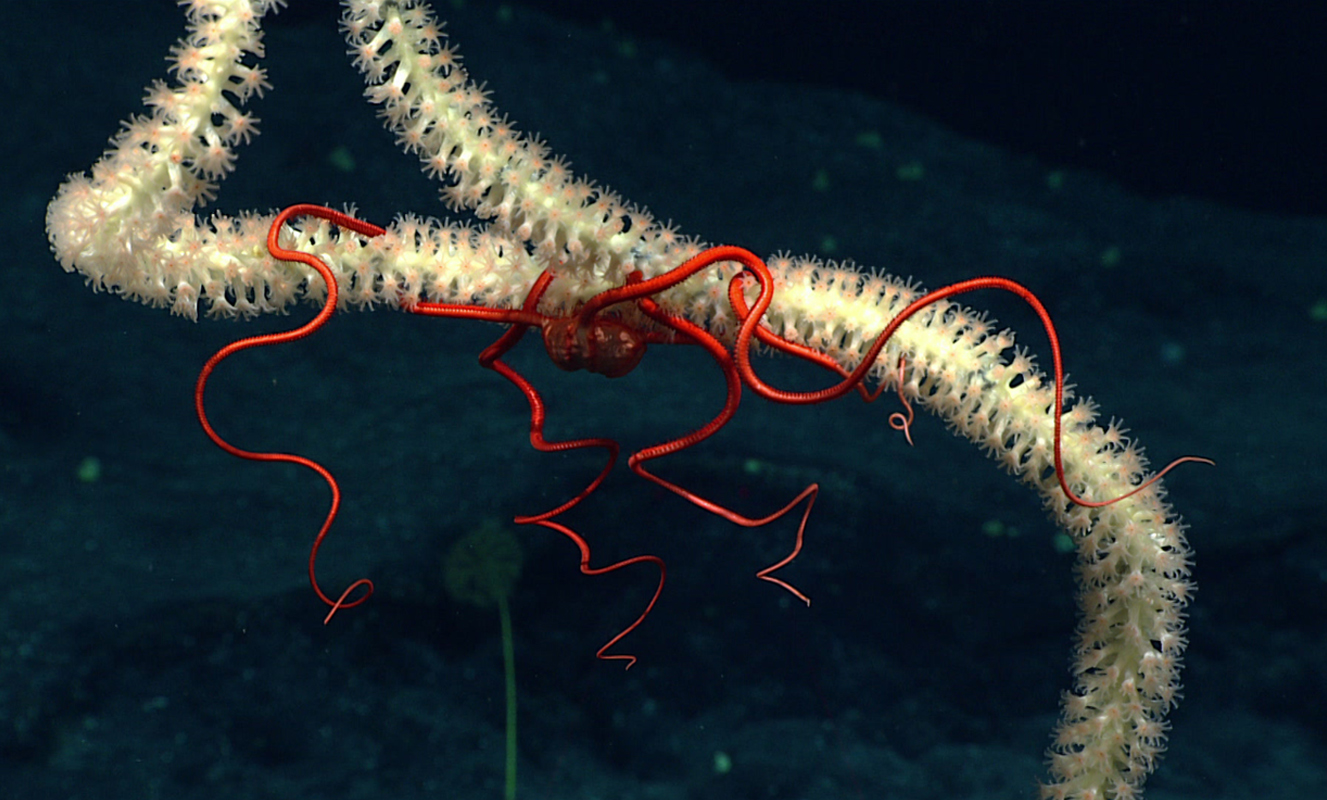
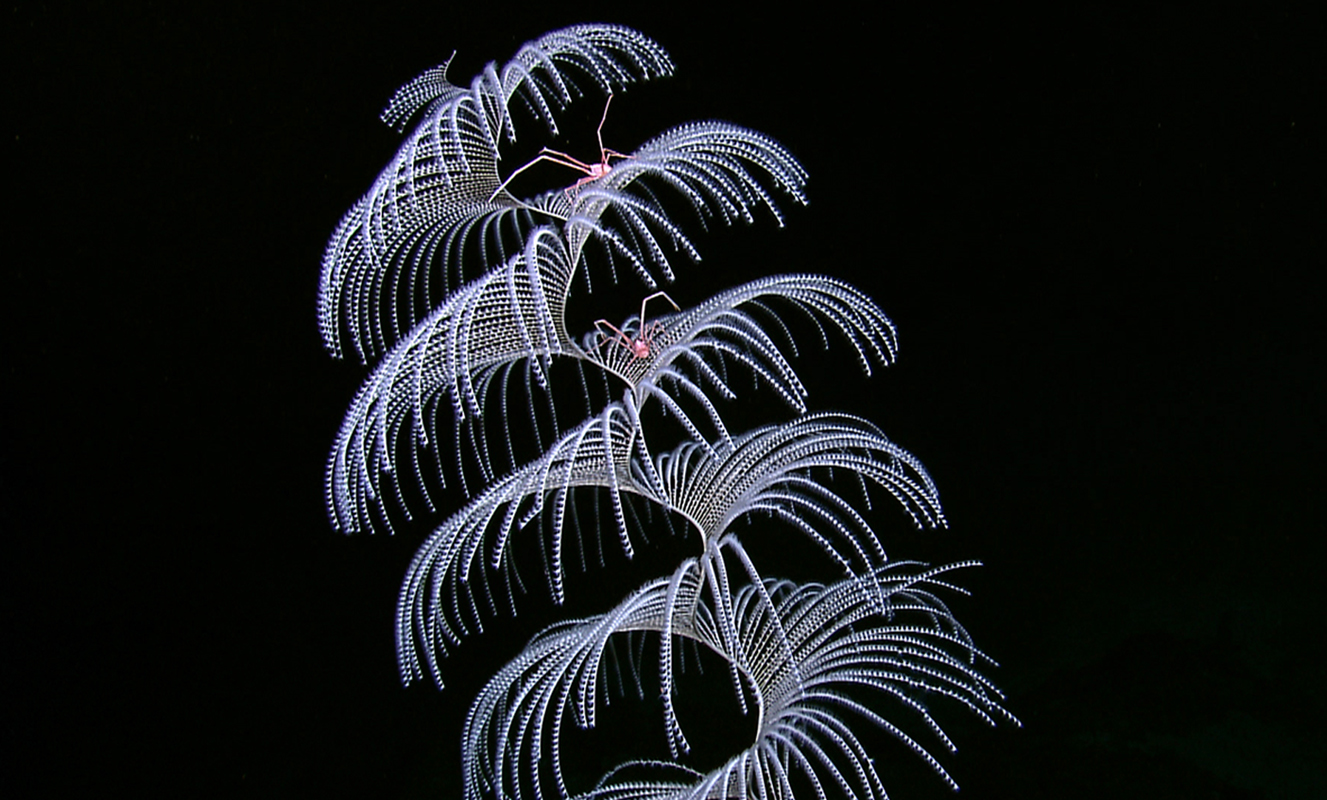

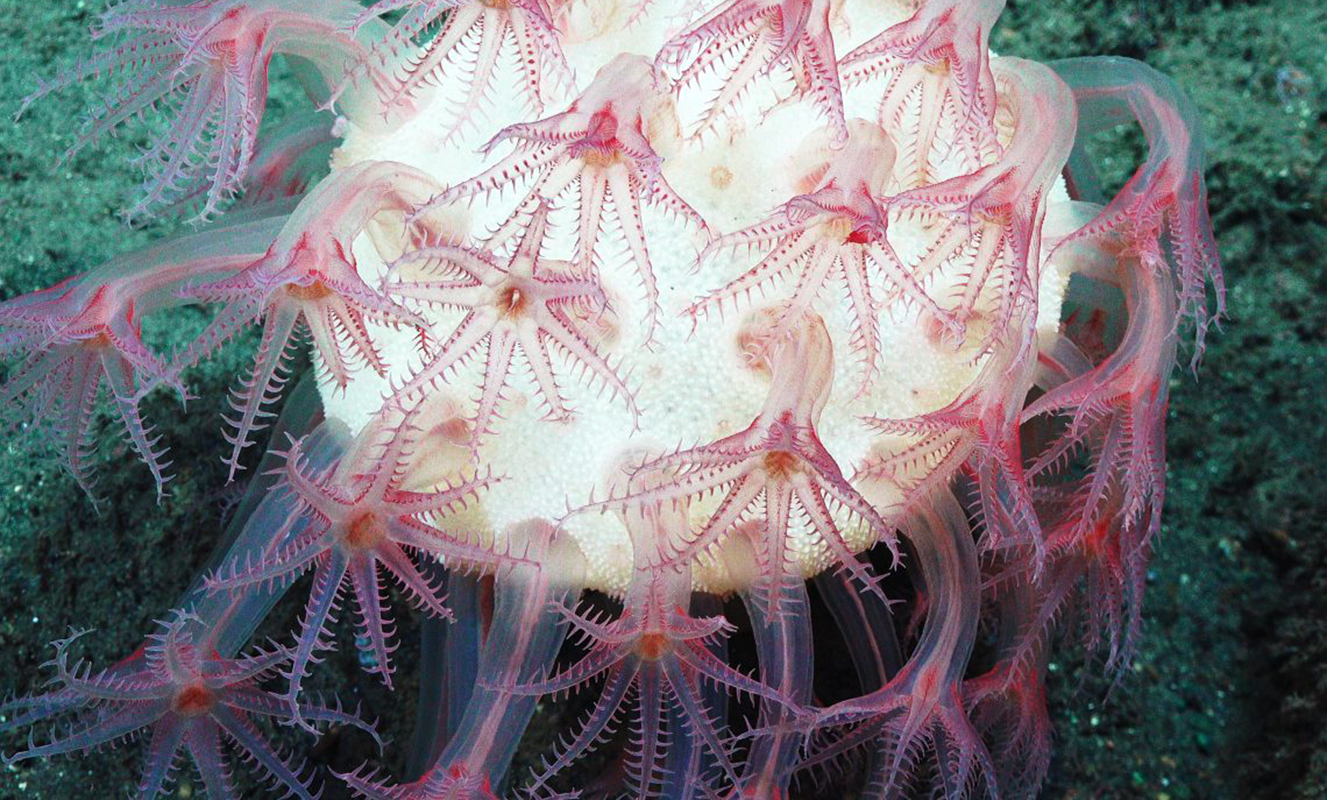
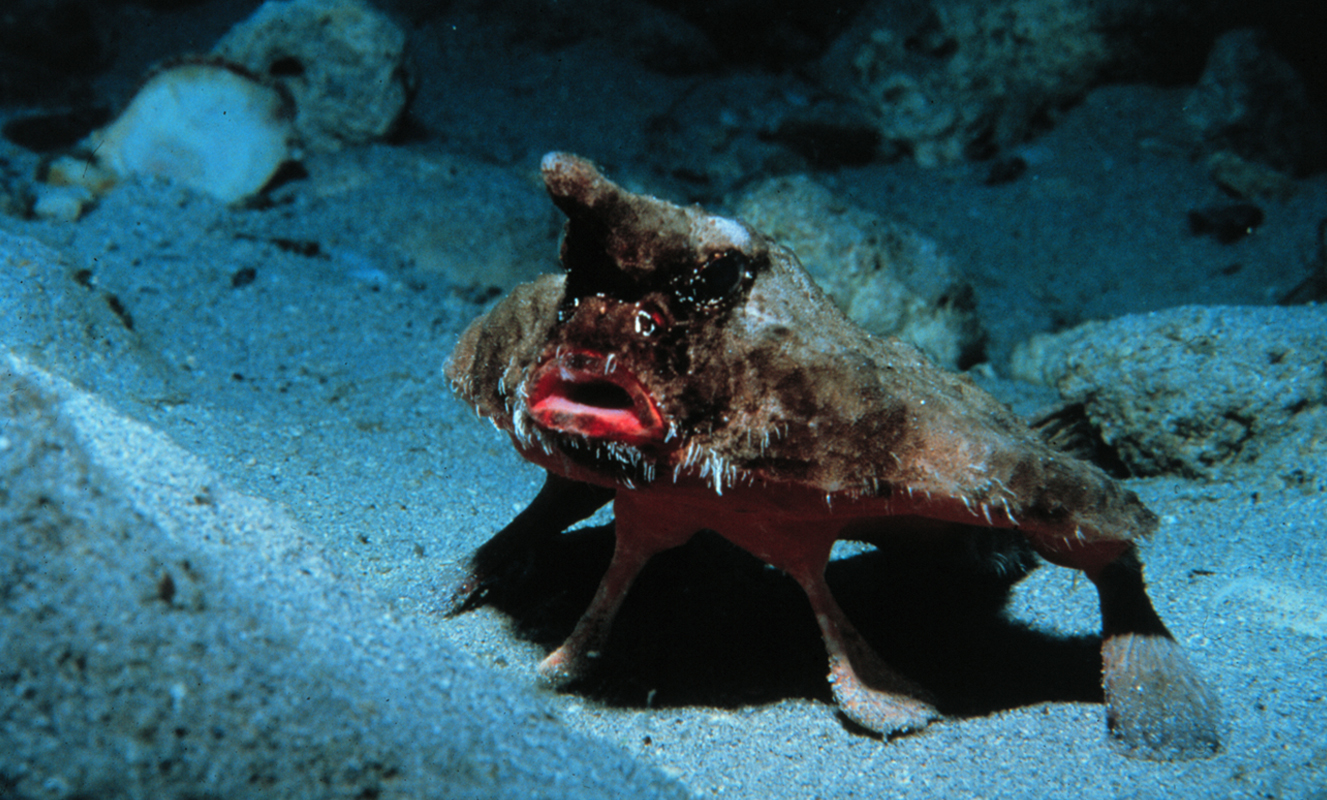
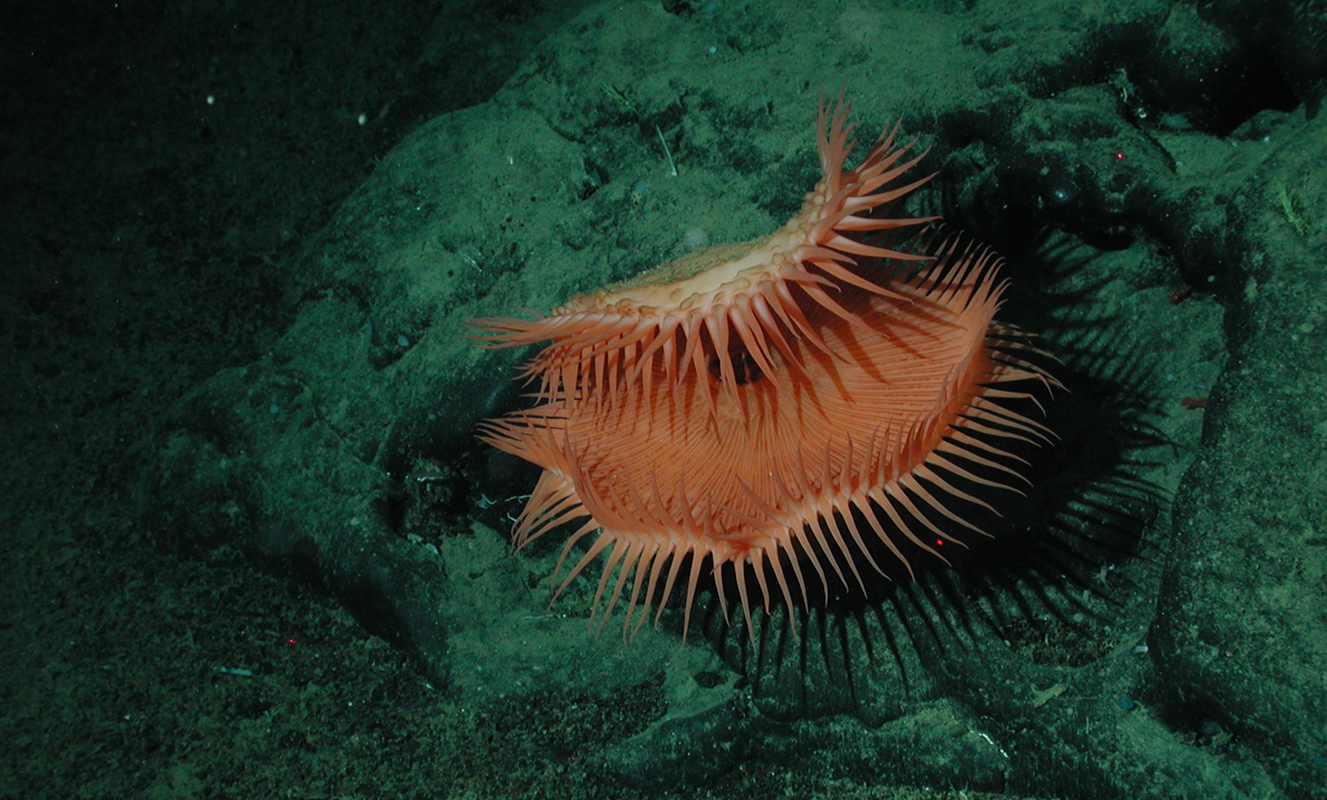
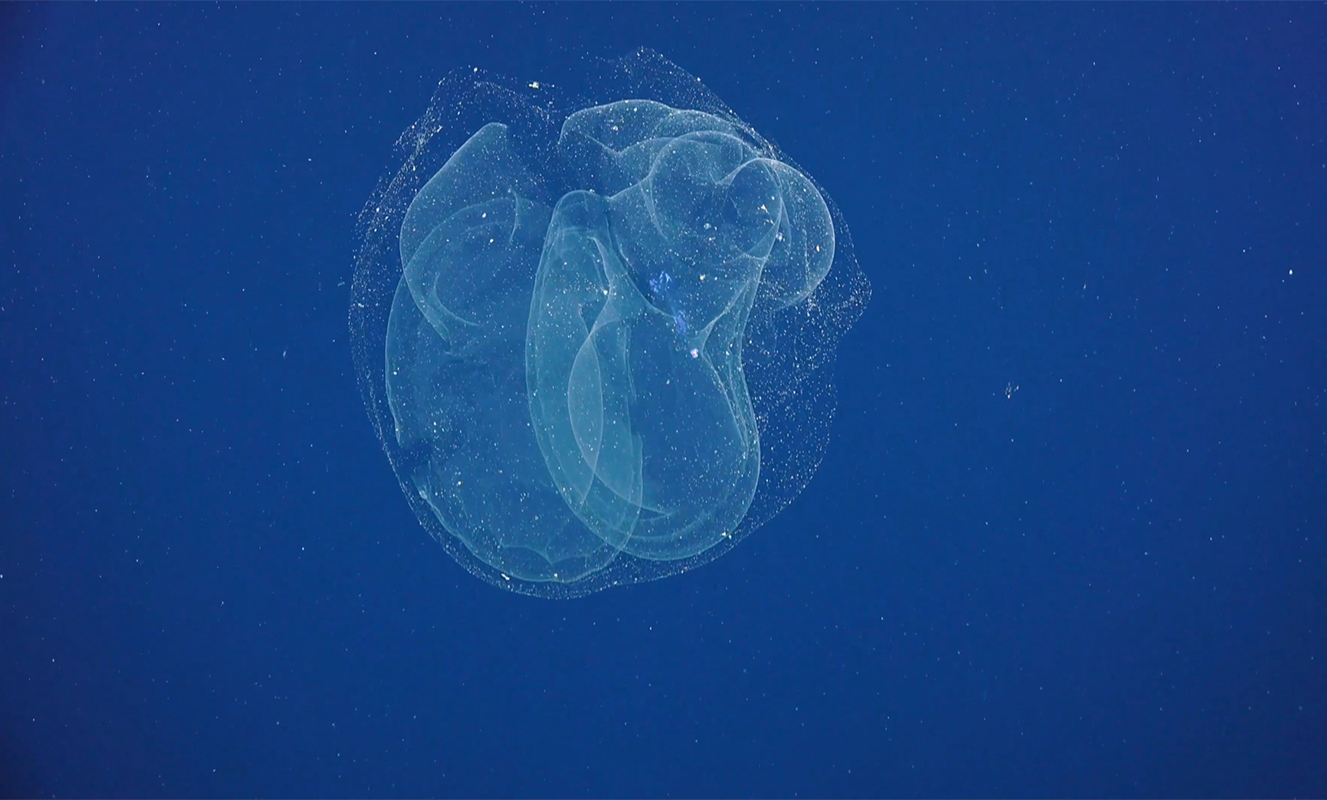


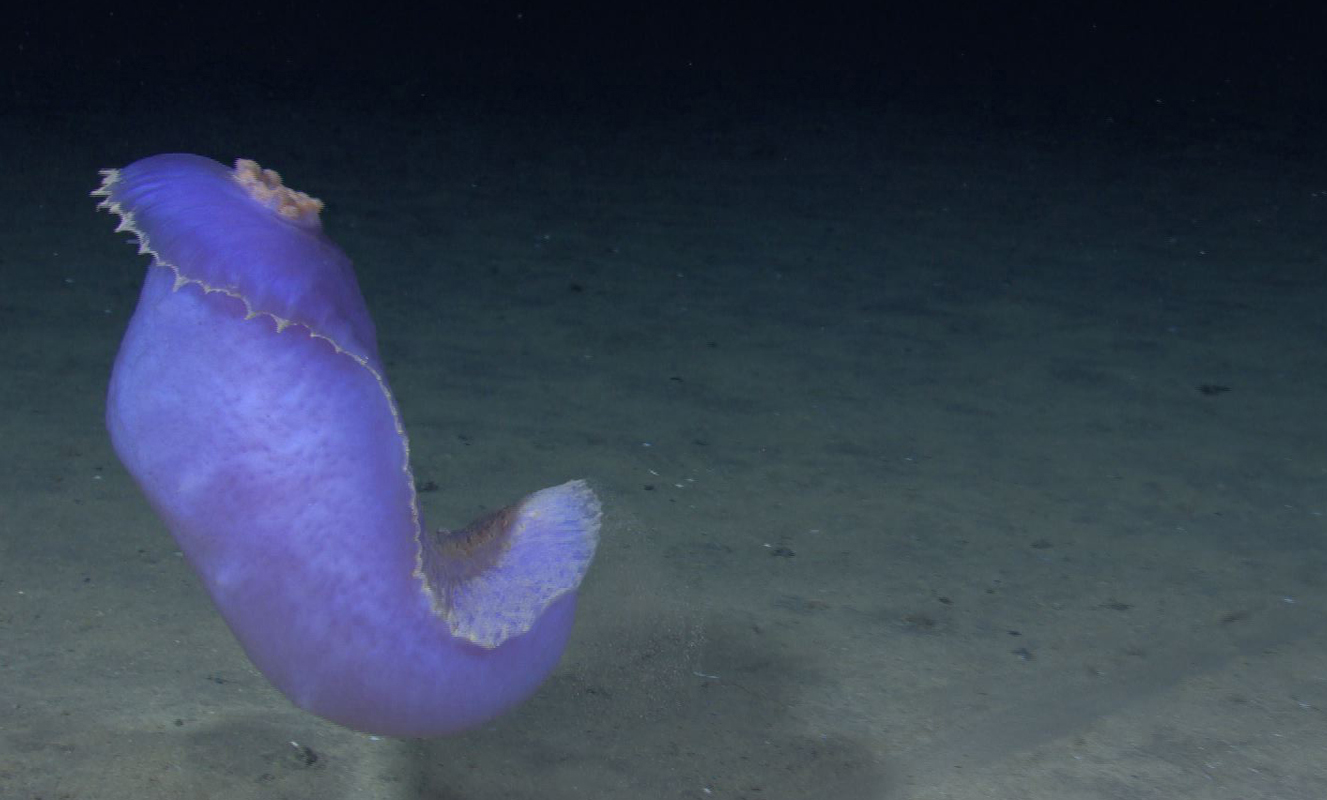
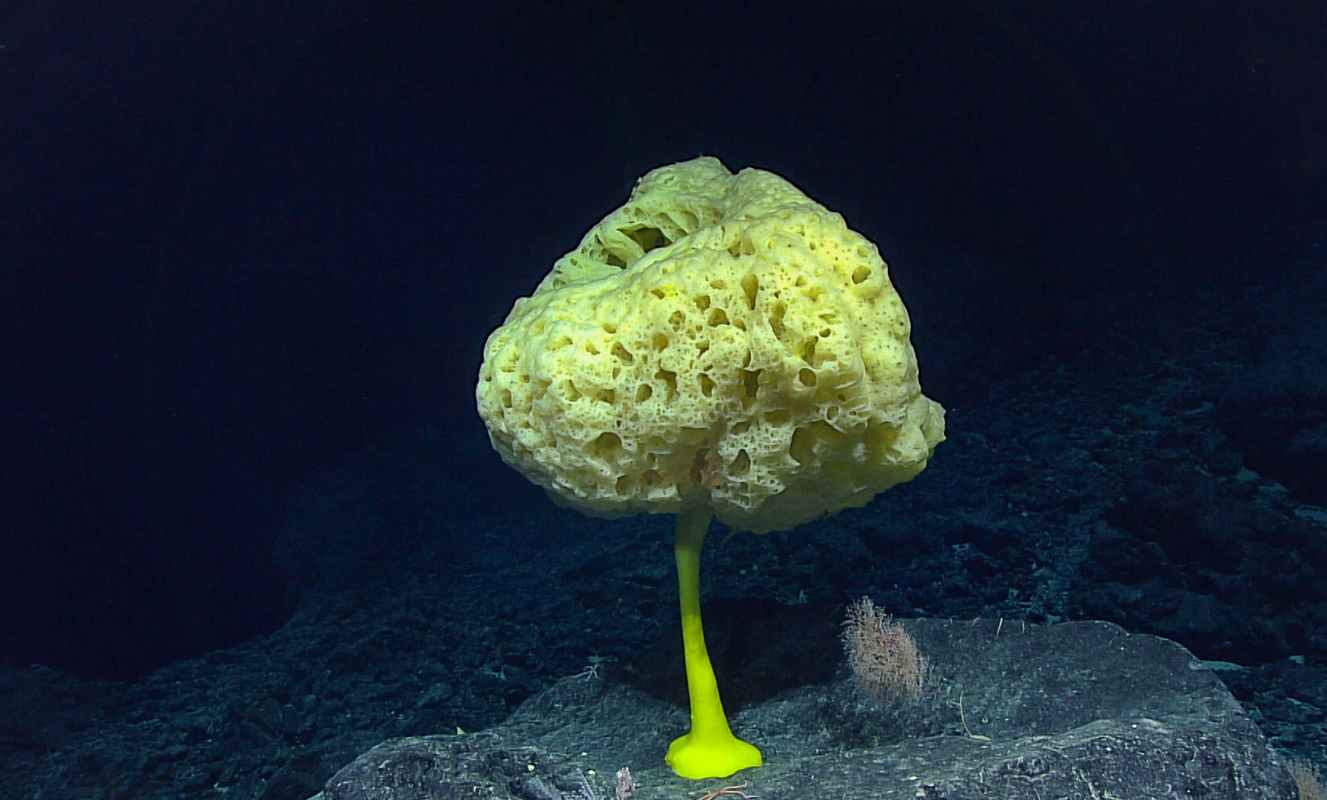


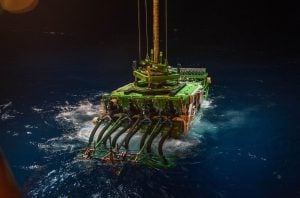
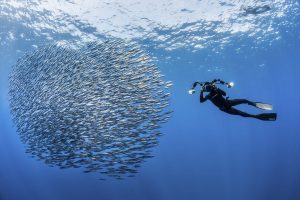
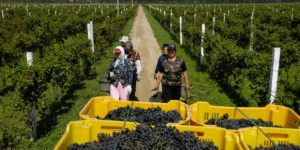

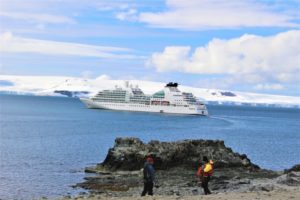
![Fears of river diversion have led to protests against a Chinese funded hydropower project in Kashmir [image by: Ghulam Rasool]](https://dialogue.earth/content/uploads/2019/03/Neelum1-Ghulam-Rasool-300x200.jpg)
